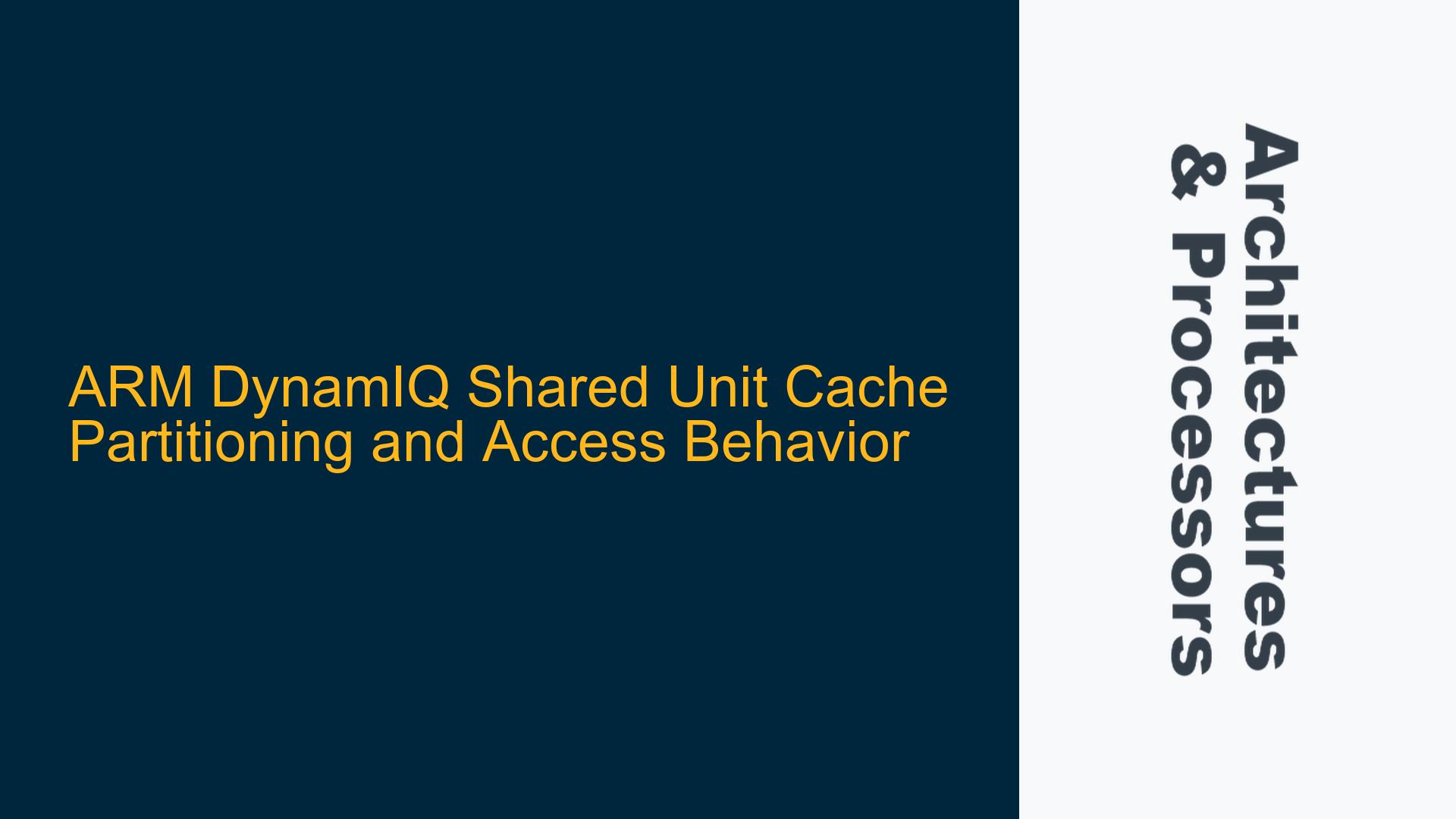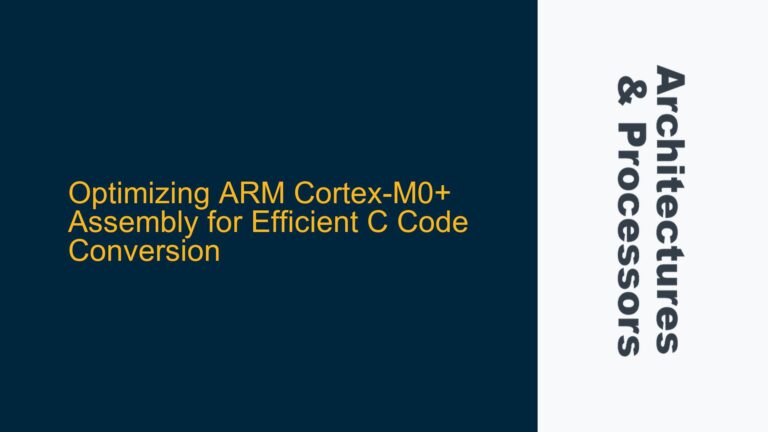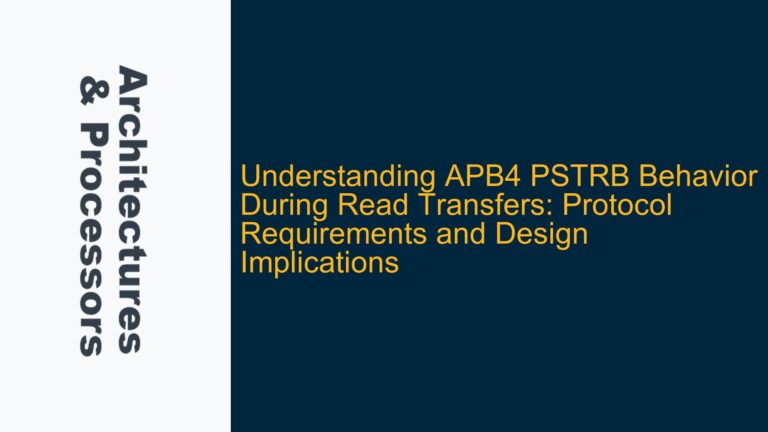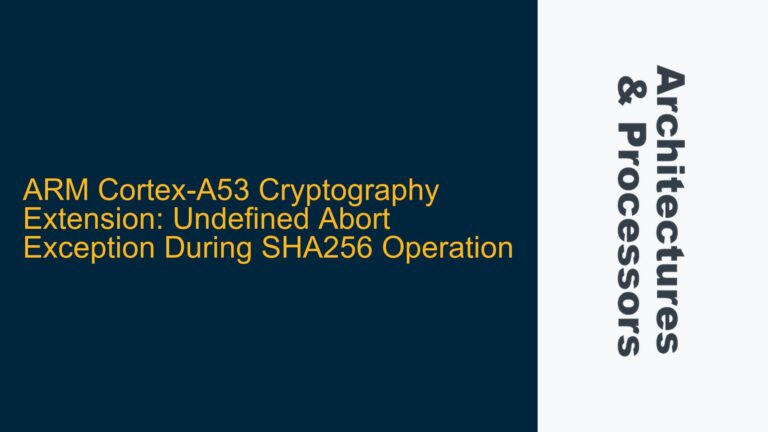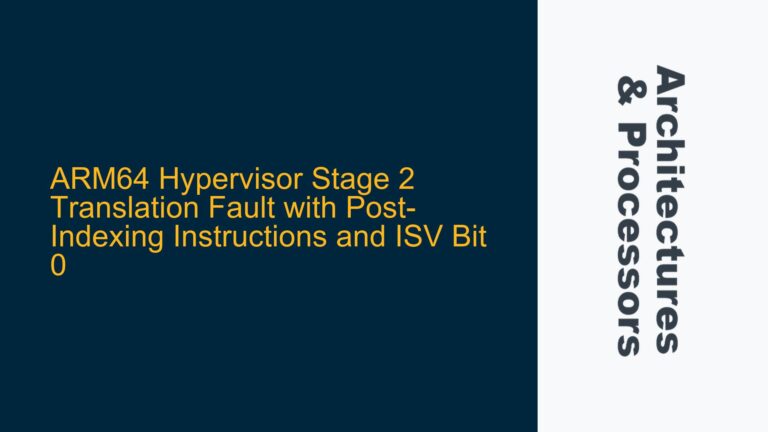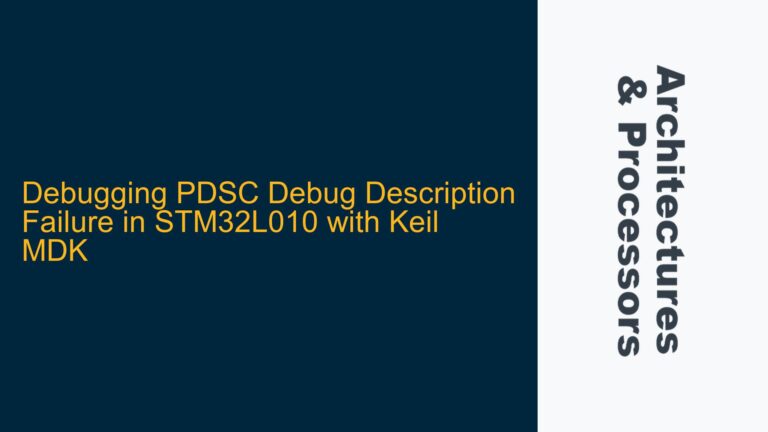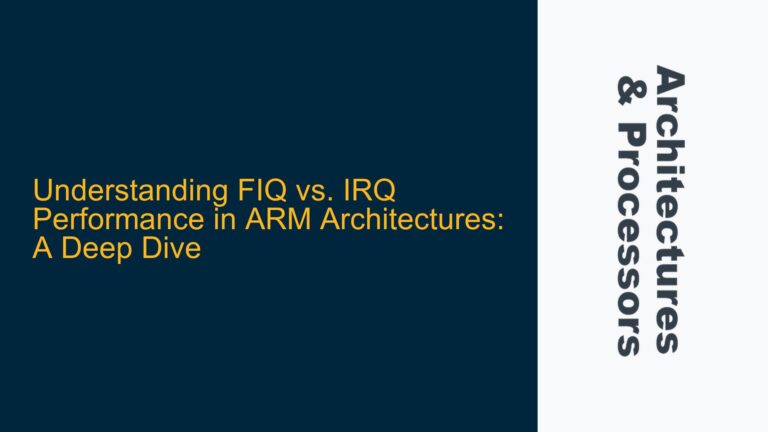ARM DynamIQ Shared Unit Cache Partitioning Mechanics
The ARM DynamIQ Shared Unit (DSU) is a critical component in modern ARM-based systems, particularly in multi-core processors. It manages the shared L3 cache and provides advanced features such as cache partitioning, which allows for the allocation of specific cache ways to individual cores. This partitioning mechanism is designed to optimize performance by ensuring that each core has dedicated cache resources, reducing contention and improving latency for critical tasks.
Cache partitioning in the DSU is implemented at the way level. Each cache way can be assigned to a specific core, making it private to that core. This assignment is typically managed through configuration registers that control the allocation of cache ways. The primary purpose of this partitioning is to ensure that high-priority tasks running on a specific core have guaranteed access to a portion of the cache, thereby reducing the likelihood of cache thrashing and improving overall system performance.
However, the question arises whether a core can still access cache ways that have been assigned as private to another core. The documentation suggests that the partitioning is primarily concerned with cache line allocations, but it does not explicitly state whether a core can read or write to a cache way that is assigned to another core. This ambiguity is crucial for understanding the behavior of the DSU and for designing systems that rely on cache partitioning for performance optimization.
To delve deeper into this issue, it is essential to understand the underlying mechanics of cache partitioning in the DSU. The DSU’s cache partitioning is not just a simple isolation mechanism; it involves complex interactions between the cores, the cache controller, and the memory system. The partitioning is enforced by the cache controller, which ensures that cache lines are allocated according to the configured way assignments. However, the enforcement of these assignments may vary depending on the specific implementation and the configuration of the DSU.
Core Access to Privately Partitioned Cache Ways
One of the key concerns in the discussion is whether a core can access cache ways that have been assigned as private to another core. This issue is critical because it directly impacts the effectiveness of cache partitioning. If a core can access another core’s private cache ways, it could lead to unintended interference, potentially undermining the benefits of partitioning.
The behavior of the DSU in this regard is influenced by several factors, including the configuration of the cache controller, the specific ARM core architecture, and the implementation of the cache partitioning mechanism. In general, the DSU is designed to enforce cache partitioning strictly, meaning that a core should not be able to access cache ways that are assigned to another core. However, there are scenarios where this enforcement might not be absolute, leading to potential access violations.
One possible scenario where a core might access another core’s private cache ways is during cache maintenance operations. Cache maintenance operations, such as cache invalidation or cleaning, are necessary for ensuring cache coherency and consistency. These operations often require access to the entire cache, including privately partitioned ways. In such cases, the cache controller might temporarily override the partitioning to perform the necessary maintenance tasks. This behavior is typically transparent to the software and does not result in data corruption or coherency issues.
Another scenario where access to privately partitioned cache ways might occur is during debugging or diagnostic operations. Debugging tools and diagnostic software often require access to the entire cache to analyze system behavior and identify performance bottlenecks. In these cases, the cache partitioning might be temporarily disabled or bypassed to allow the debugging tools to access the necessary cache ways. This is usually done under controlled conditions and does not affect the normal operation of the system.
However, in normal operation, the DSU should enforce cache partitioning strictly, preventing cores from accessing cache ways assigned to other cores. This enforcement is typically implemented through hardware mechanisms that monitor cache access requests and ensure that they comply with the configured partitioning. If a core attempts to access a cache way that is not assigned to it, the cache controller will either deny the access or redirect it to the appropriate cache way.
Troubleshooting Cache Partitioning and Access Issues
When dealing with cache partitioning and access issues in the ARM DynamIQ Shared Unit, it is essential to follow a systematic approach to identify and resolve the problem. The following steps outline a comprehensive troubleshooting process that can be used to diagnose and fix issues related to cache partitioning and access behavior.
Step 1: Verify Cache Partitioning Configuration
The first step in troubleshooting cache partitioning issues is to verify the configuration of the cache partitioning mechanism. This involves checking the configuration registers that control the allocation of cache ways to individual cores. The configuration registers should be set up according to the desired partitioning scheme, ensuring that each core has the appropriate number of cache ways assigned to it.
It is also important to verify that the cache partitioning configuration is consistent across all cores. Inconsistent configurations can lead to unexpected behavior, such as cores accessing cache ways that are not assigned to them. This can be done by reading the configuration registers on each core and comparing them to ensure that they match the intended partitioning scheme.
Step 2: Monitor Cache Access Patterns
Once the cache partitioning configuration has been verified, the next step is to monitor the cache access patterns of the cores. This can be done using performance monitoring tools that track cache accesses and provide detailed information about which cache ways are being accessed by each core.
By analyzing the cache access patterns, it is possible to identify any anomalies or violations of the cache partitioning scheme. For example, if a core is accessing cache ways that are assigned to another core, this would indicate a potential issue with the cache partitioning enforcement. The performance monitoring tools can also provide insights into the frequency and timing of these access violations, helping to pinpoint the root cause of the problem.
Step 3: Investigate Cache Maintenance Operations
Cache maintenance operations, such as cache invalidation or cleaning, can sometimes interfere with cache partitioning. These operations often require access to the entire cache, including privately partitioned ways, which can lead to temporary violations of the partitioning scheme.
To investigate this, it is necessary to review the cache maintenance operations that are being performed by the system. This includes checking the software that initiates these operations and ensuring that they are being executed correctly. It is also important to verify that the cache controller is handling these operations properly and that they are not causing unintended access to privately partitioned cache ways.
Step 4: Debugging and Diagnostic Tools
If the cache partitioning and access issues persist, it may be necessary to use debugging and diagnostic tools to further investigate the problem. These tools can provide detailed information about the internal state of the cache controller and the behavior of the cores.
Debugging tools can be used to set breakpoints and trace the execution of code that interacts with the cache. This can help identify any software issues that might be causing the cache partitioning violations. Diagnostic tools, on the other hand, can provide insights into the hardware behavior, such as the state of the cache controller and the cache access patterns.
Step 5: Review and Update Firmware
In some cases, cache partitioning and access issues may be caused by firmware bugs or misconfigurations. Firmware is responsible for initializing and configuring the cache controller, and any errors in the firmware can lead to incorrect cache partitioning behavior.
To address this, it is necessary to review the firmware code and ensure that it is correctly configuring the cache partitioning mechanism. This includes checking the initialization routines and the configuration registers that control the cache partitioning. If any issues are found, the firmware should be updated to fix the problem.
Step 6: Consult ARM Documentation and Support
If the cache partitioning and access issues cannot be resolved through the above steps, it may be necessary to consult the ARM documentation and support resources. The ARM documentation provides detailed information about the behavior of the DSU and the cache partitioning mechanism, which can help in understanding the root cause of the problem.
ARM support can also provide assistance in diagnosing and resolving cache partitioning issues. This may involve reviewing the system configuration, analyzing performance monitoring data, and providing recommendations for resolving the issue. In some cases, ARM support may also provide firmware updates or patches to address known issues with the DSU.
Step 7: Implement Workarounds and Optimizations
In some cases, it may not be possible to fully resolve the cache partitioning and access issues. In such scenarios, it may be necessary to implement workarounds or optimizations to mitigate the impact of the problem.
One possible workaround is to adjust the cache partitioning scheme to reduce the likelihood of access violations. This might involve reallocating cache ways to ensure that each core has sufficient resources to avoid contention. Another optimization is to modify the software to minimize the frequency of cache maintenance operations, thereby reducing the chances of temporary access violations.
Step 8: Validate and Test the Solution
Once a solution has been implemented, it is essential to validate and test the system to ensure that the cache partitioning and access issues have been resolved. This involves running a series of tests to verify that the cache partitioning is being enforced correctly and that there are no access violations.
The tests should include both functional and performance tests to ensure that the system is operating as expected. Functional tests should verify that the cache partitioning is being enforced correctly, while performance tests should measure the impact of the solution on system performance. If any issues are found during testing, further adjustments may be necessary to fully resolve the problem.
Step 9: Document the Findings and Solution
Finally, it is important to document the findings and the solution to the cache partitioning and access issues. This documentation should include a detailed description of the problem, the steps taken to diagnose and resolve the issue, and the final solution that was implemented.
The documentation should also include any relevant configuration settings, performance monitoring data, and test results. This information can be valuable for future reference and can help in diagnosing and resolving similar issues in the future.
Conclusion
Cache partitioning in the ARM DynamIQ Shared Unit is a powerful feature that can significantly improve system performance by reducing cache contention and ensuring that high-priority tasks have dedicated cache resources. However, it is essential to understand the behavior of the DSU and the cache partitioning mechanism to avoid potential issues.
By following a systematic troubleshooting process, it is possible to diagnose and resolve cache partitioning and access issues, ensuring that the system operates as intended. This involves verifying the cache partitioning configuration, monitoring cache access patterns, investigating cache maintenance operations, using debugging and diagnostic tools, reviewing and updating firmware, consulting ARM documentation and support, implementing workarounds and optimizations, and validating and testing the solution.
With a thorough understanding of the DSU and a rigorous approach to troubleshooting, it is possible to optimize the performance of ARM-based systems and ensure reliable operation in even the most demanding applications.
